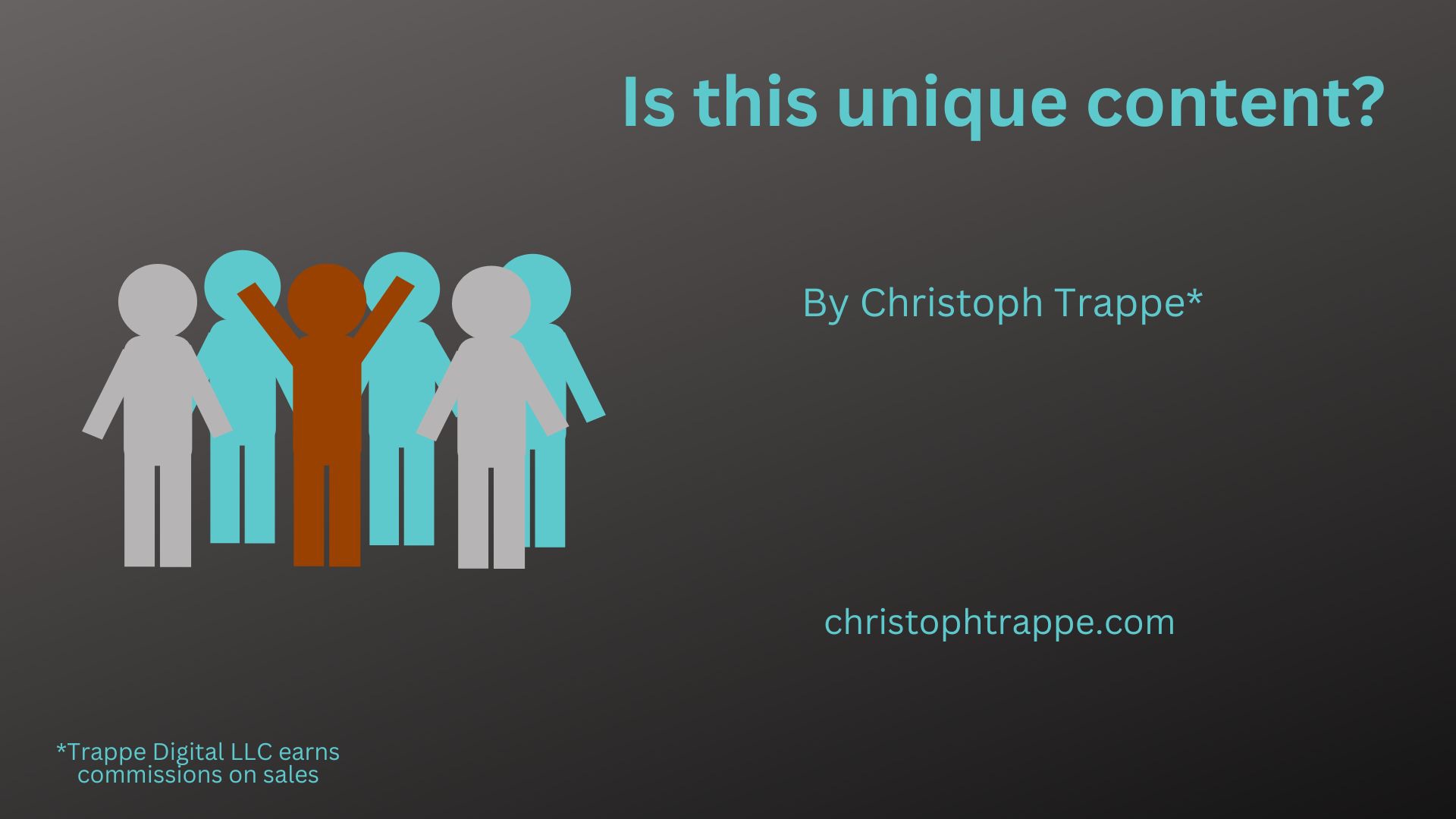Trappe Digital LLC may earn commissions from sponsored links and content. When you click and buy you also support us.
Unique content is a term that is thrown around by some content experts, and it’s an important piece of any long-term marketing strategy. Especially today in the world of AI hogging the headlines.
What’s unique content?
On the most basic level, unique content means that a brand’s content is different from the rest. It’s not just regurgitating the same old topics and angles that everyone talks about.
Unique content means that the viewpoint and stories illustrating the content are specific to the brand.
Of course, it’s okay to link to other materials and even other viewpoints. I would even recommend that in several cases. But don’t just quote others and call that remix tape of what’s already out there unique content.
Why can unique content be hard?
It’s so easy for brands to compare themselves to everyone else. A competitor talks about a topic, that can easily mean that the brand starts talking about the same topic as well. But spitting out the same or really similar content isn’t unique and won’t help a company stand out.
Sometimes people get hung up on that unique must be contrarian. If everyone says one thing, saying the opposite will be unique. And sometimes that can be the way to go, but there’s also always a level of risk involved when it comes to taking the road less traveled when it comes to opinions and content topics. And in some cases saying the opposite might be really wrong. Something to weigh.
Unique content and artificial intelligence
Smart content creators use AI to make their content better and more unique. That can include getting headline ideas from AI. Or having AI edit and proofread our content.
But AI currently will have a hard time to truly make content unique. For that to happen somebody at the brand will have to think through the content tilt and the point of view the brand wants to offer. And sometimes AI can get the facts wrong when it creates content from scratch.
And it looks like Google AI search results will need a ton of long tail and combined longer tail keywords in the future. For example, in the past a brand may have produced content around:
How to do this specific thing
With AI opening the door to even more nuanced searches and results, a future search might look like:
How to do this specific thing while this other thing is also true, another thing could be factored in and this final thing can’t be part of it.
Certainly, it will be hard to account for all those variables in one piece of content, but the overall repository of published content can help a brand get there.
How to get started with unique content
Make it part of an overall marketing strategy. And tie it into what makes the brand unique to begin with. What’s its story and how can we keep building and sharing it over and over until all potential customers have had a chance to see it?
That includes to create content for a variety of owned and other channels. I recommend a rough workflow like this:
- Determine content areas to focus on
- Figure out the main channels – while keeping in mind that new channels and opportunities emerge
- Create the workflow – who is doing what pieces of the content creation, who approves it, etc.
- Keep publishing and measuring
Unique content that gets published on an ongoing basis can help brands win. But for it to be unique it’s important to determine what to talk about, how to tie it into the business and how to get it in front of the right consumers.
When done right unique content helps brands stand out. It helps them … dare I say it … be unique – and when done right that can be a differentiator in a busy market.

